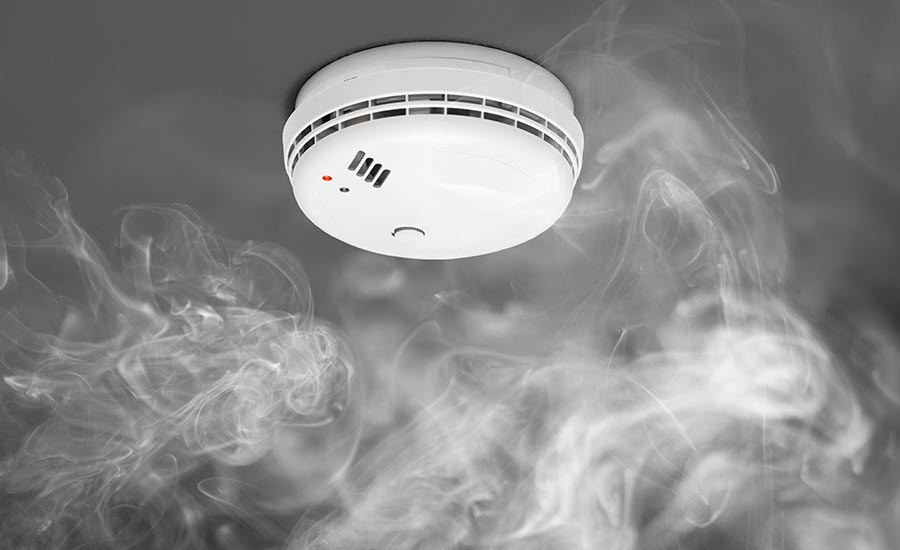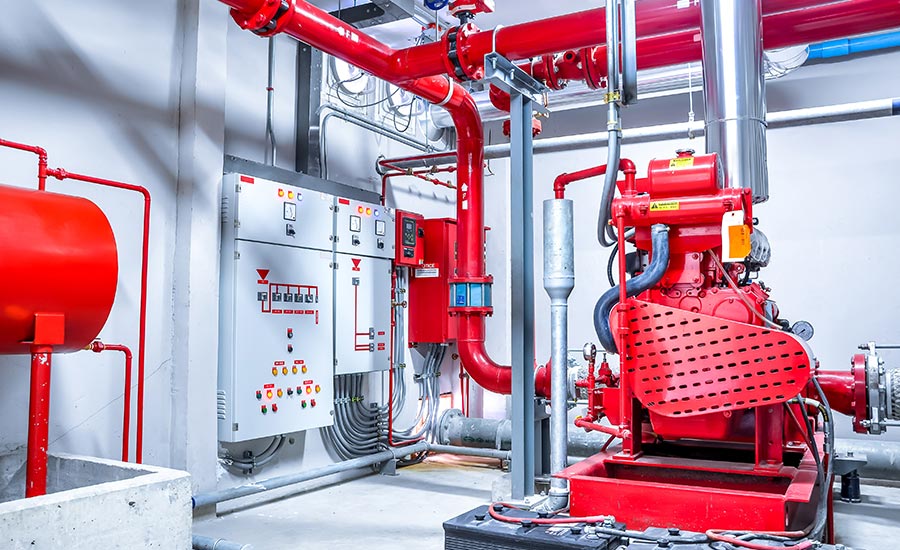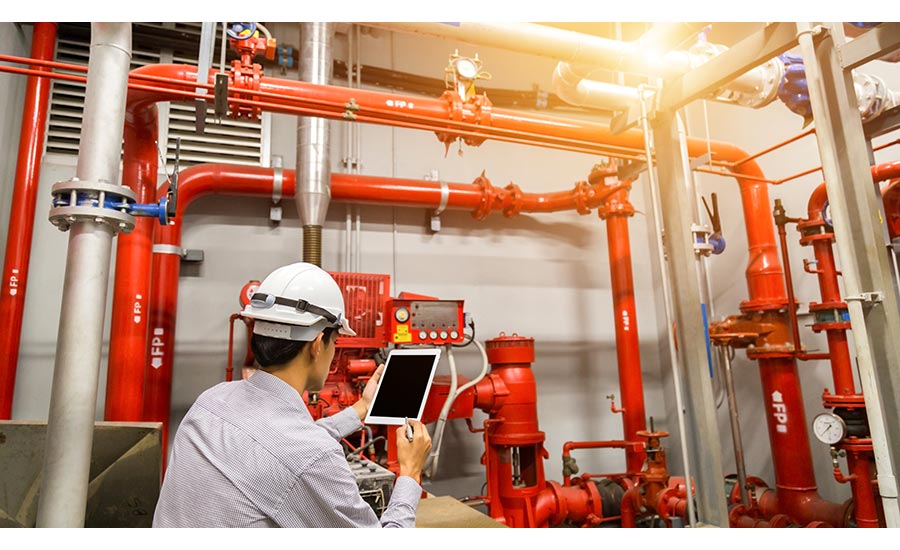With fire and life safety technicians deemed essential workers early in the pandemic, building owners were able to keep up with their systems’ inspections and maintenance while maintaining minimally occupied facilities. But as the country continues its vaccine distribution, allowing the public to return to schools, offices, shopping centers and more, the resulting influx of fully vaccinated occupants heightens the need to strengthen and optimize fire safety strategies. Simply put, more occupants mean fire detection and evacuation processes must be more efficient than ever.
To protect occupants and remain prepared for any fire emergency, building owners need to take a proactive approach to deliver safe and secure environments. The best way to achieve this is through smart, efficient and modernized infrastructure.

Integration can make the most of evacuation time by allowing fire and other building systems to communicate during an emergency, enabling the automation of traditionally manual processes.
Fire system integration drives life-saving outcomes
The modern safe and healthy building holistically connects every data touchpoint for greater oversight and safety, transforming fire safety strategies from reactive to proactive. By integrating previously disparate systems and technologies — such as smoke detection devices, advanced sensors, fire control units and mass notification systems (MNS) — onto a single network, managers gain access to powerful automation and data insights that allow them to optimize their buildings’ operations for maximum safety. In doing so, they are empowered to drive outcomes such as:
1. A streamlined emergency response. The nature of fire emergencies has steadily evolved throughout the past few decades, with modern structures built and furnished with synthetic materials burning eight times faster than similar buildings would have 50 years ago. This unfortunately means occupants have less time to safely evacuate, and responses need to be adjusted accordingly and use modern, advanced approaches.
Integration can make the most of evacuation time by allowing fire and other building systems to communicate during an emergency, enabling the automation of traditionally manual processes. For instance, consider a fire emergency within a school. The moment a smoke detector with advanced, multi-sensors is triggered, MNS can be activated to share evacuation instructions through the building’s PA system or through text alerts. HVAC systems can be powered off to prevent fanning the flames, and live video surveillance can even be sent directly to first responders to help them plan a safe approach. By connecting building systems, they are able to work together to streamline emergency response, giving occupants the best chance to evacuate safely.
2. Enhanced 24/7 remote monitoring. The pandemic and subsequent social distancing guidelines have highlighted the importance of off-site monitoring; while fire safety technicians were able to perform in-person assessments and maintenance as essential workers, every on-site visit posed a potential health risk. By integrating fire systems onto a single network supported by cloud technology, facility managers can proactively check the health and performance of their buildings and fire systems remotely via their laptop, tablet or even smartphone. This access to real-time data even when off-site allows organizations to keep their facilities minimally occupied as society gradually makes its way back into buildings while still enjoying the peace of mind that they are being monitored around the clock.
3. False alarm reduction for time and cost efficiency. False alarms, better defined as nuisance alarms, are a costly and time-consuming nuisance for businesses and local first responders alike. While the first few nuisance alarms may only incur minimal fees, repeated offenses can result in thousands of dollars in fines to businesses, and can even result in police and fire departments requiring some type of alarm verification before responding. Recurring nuisance alarms can also cause alarm apathy amongst occupants, eventually dulling their reaction to any alarm, which can be dangerous in the case of a true emergency. Integrating fire systems gives facility managers the insight needed to identify the source of nuisance alarms quickly and efficiently, allowing them to remedy the situation once and for all. With nuisance alarms mitigated, facility managers can use the time saved to remain focused on their primary business missions, and first responders are free to focus on actual emergencies. Should an alarm sound, they’ll know it’s legitimate and can enact a thorough and robust response.

The pandemic and subsequent social distancing guidelines have highlighted the importance of off-site monitoring; while fire safety technicians were able to perform in-person assessments and maintenance as essential workers, every on-site visit posed a potential health risk.
 By integrating fire systems onto a single network supported by cloud technology, facility managers can proactively check the health and performance of their buildings and fire systems remotely via their laptop, tablet or even smartphone.
By integrating fire systems onto a single network supported by cloud technology, facility managers can proactively check the health and performance of their buildings and fire systems remotely via their laptop, tablet or even smartphone.
Integration leads the way in smart, safe and connected environments
Creating a smart and modernized fire safety infrastructure does not have to be difficult. Organizations can work with a trusted partner to perform a full assessment to identify any gaps in their systems. From there, they can upgrade aged fire system components, such as fire alarm control units, sprinklers and smoke detection devices to the latest data-powered solutions and sensors. With updates complete, they are ready to seamlessly integrate them with other building systems in a single, easy-to-use platform to enable streamlined operations and real-time data insights. The right partner can even manage maintenance and monitoring processes to ensure all assets remain high-performing and prepared for an emergency.
As the public continues to return to the spaces where they work, learn and play, now is the time for organizations to invest in safe occupant experiences. Through modern, smart and connected fire safety infrastructure, any facility can be made more secure for occupants. Integration enhances operational processes, delivers crucial performance insights and facilitates life-saving emergency preparedness, making it a critical component of any proactive safety strategy. The future of fire safety lies in intelligent integration, and no organization can afford to be left behind.




